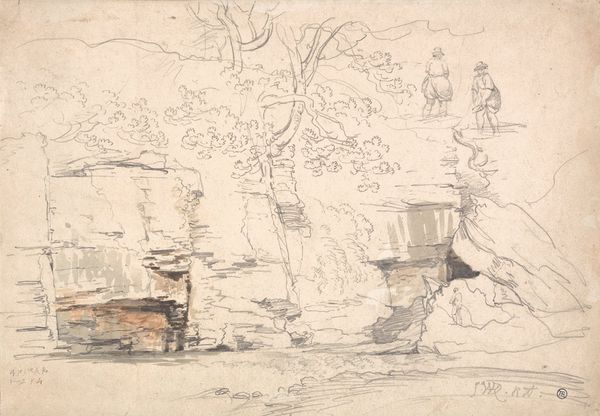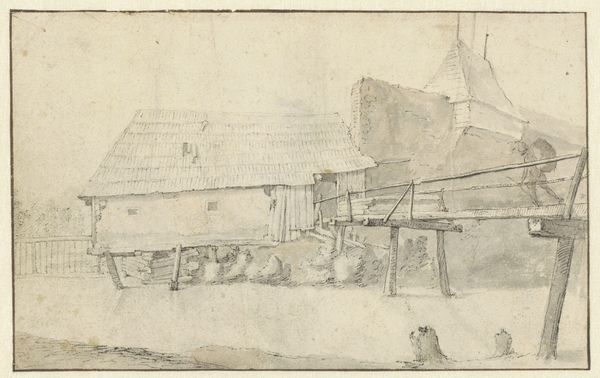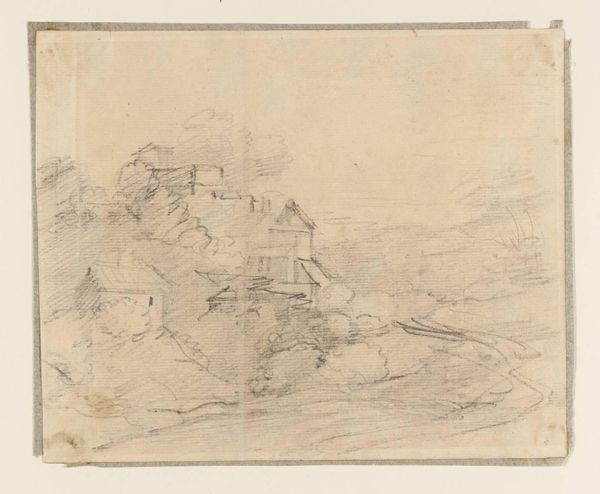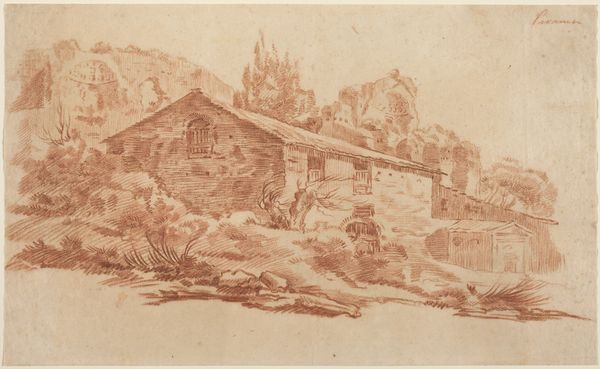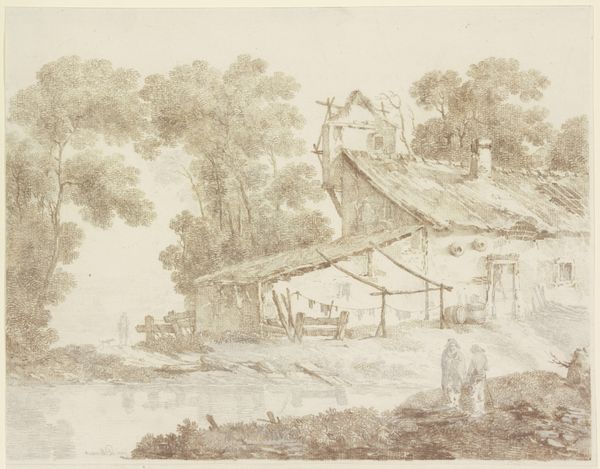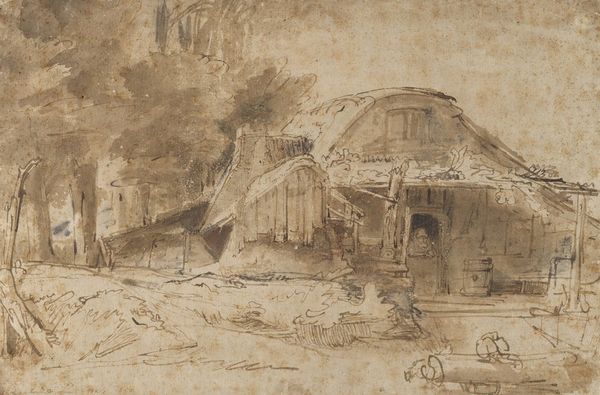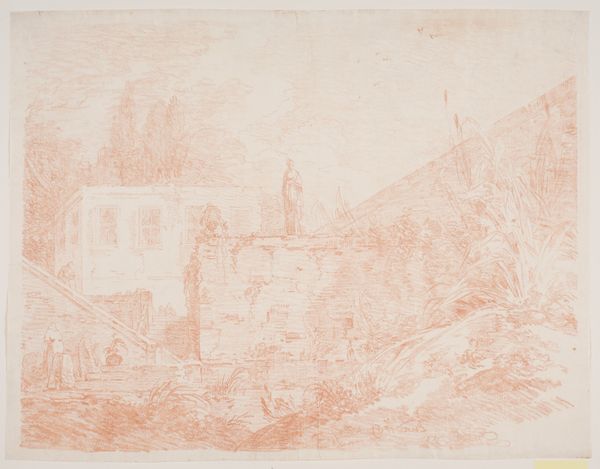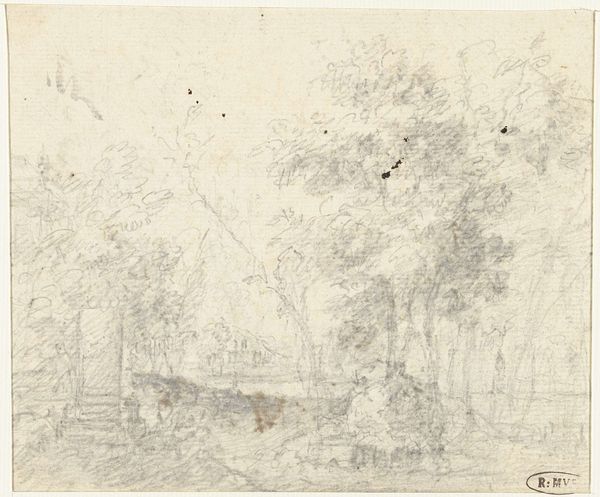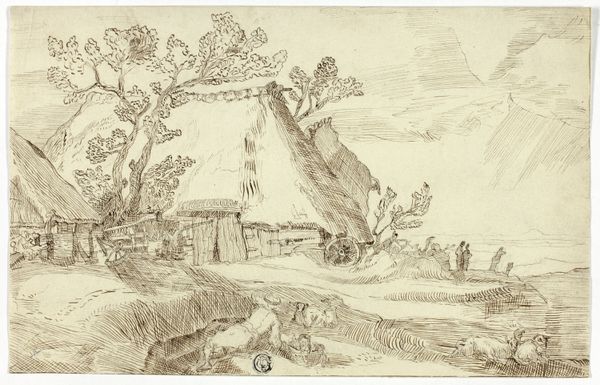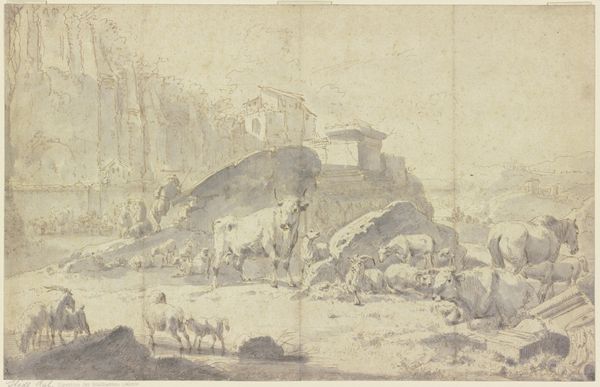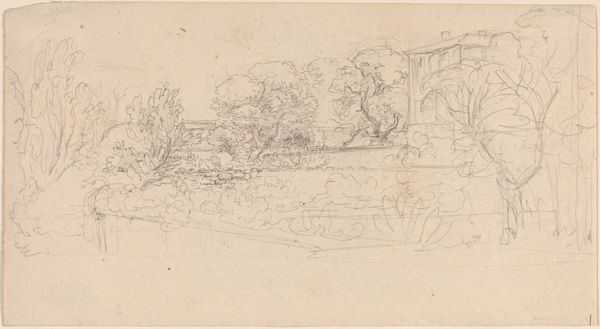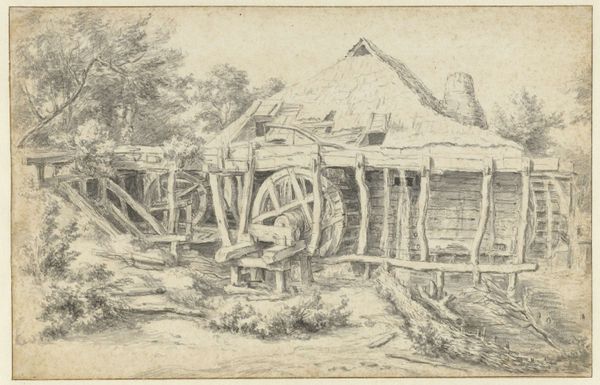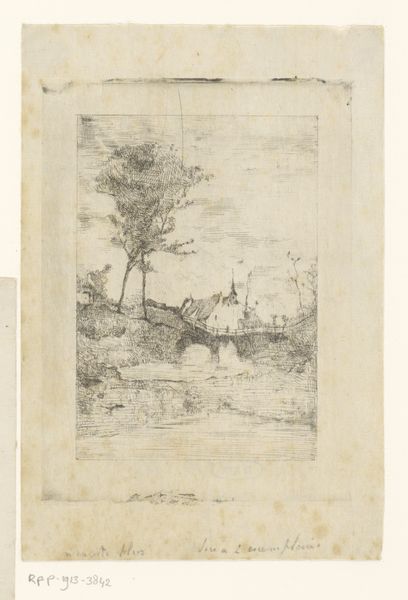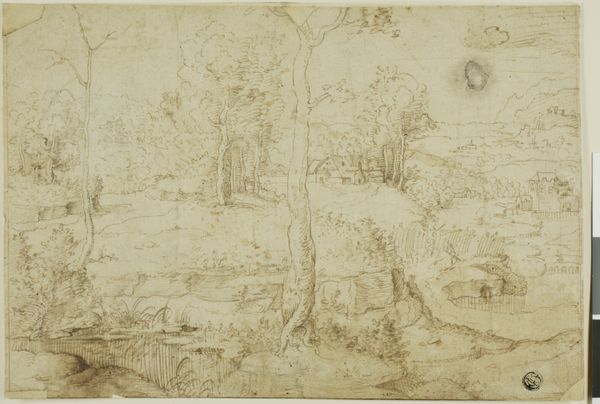
drawing, pencil
#
drawing
#
dutch-golden-age
#
landscape
#
pencil
#
realism
Dimensions: height 152 mm, width 208 mm
Copyright: Rijks Museum: Open Domain
Curator: There’s an evocative quality to this sketch; a feeling of bygone days, of time slowly marching on. Editor: It has a rather melancholic air, doesn't it? As if the house itself is sighing. I immediately see the ravages of time in the crumbling brick and timbers, though the delicate lines keep it from feeling tragic. Curator: Abraham Bloemaert likely created "Vervallen boerderij"—that translates to "Dilapidated Farmhouse"—sometime between 1571 and 1629. This delicate drawing, rendered in pencil, is held within the collection of the Rijksmuseum. What's fascinating to me is what the ruin signifies. Editor: Ah, ruins as a cultural symbol. For centuries, especially during and after the Roman empire, these architectural relics embodied the fall of civilizations. Do you find that the ruin holds similar implications in this image, particularly given the context of the Dutch Golden Age? Curator: Absolutely. The Golden Age witnessed significant social and economic upheaval, but there's an underlying anxiety, particularly in landscape art, about the potential for decline, for the collapse of the structures they had built. Bloemaert wasn't just drawing a decaying building, but potentially evoking anxieties about societal decay. This also harkens back to the vanitas tradition – a reminder of life's transience. Editor: It's remarkable how much narrative and emotion Bloemaert packs into such spare strokes. Look at the shadows. They amplify the feeling of abandonment, don’t they? Like memories fading. The use of pencil rather than ink seems deliberate too. It almost mirrors the decay, a gentle disintegration on paper. Curator: Precisely. Pencil allows for subtlety, the suggestion of form rather than concrete definition, echoing the state of the farmhouse itself. And let's not forget the placement of the ruin within the broader landscape. While the suggestion of other details exists, it isn’t really present and that highlights a certain loneliness, isolation. Editor: It strikes me now as more than just a dilapidated structure. It embodies broader narratives of history, change, and perhaps even the inevitable decay that underlies human endeavors. A visual poem. Curator: Yes, Bloemaert offers a glimpse into the anxieties and contemplations of his era through this humble, powerful drawing. A simple image, pregnant with cultural and emotional significance.
Comments
No comments
Be the first to comment and join the conversation on the ultimate creative platform.
